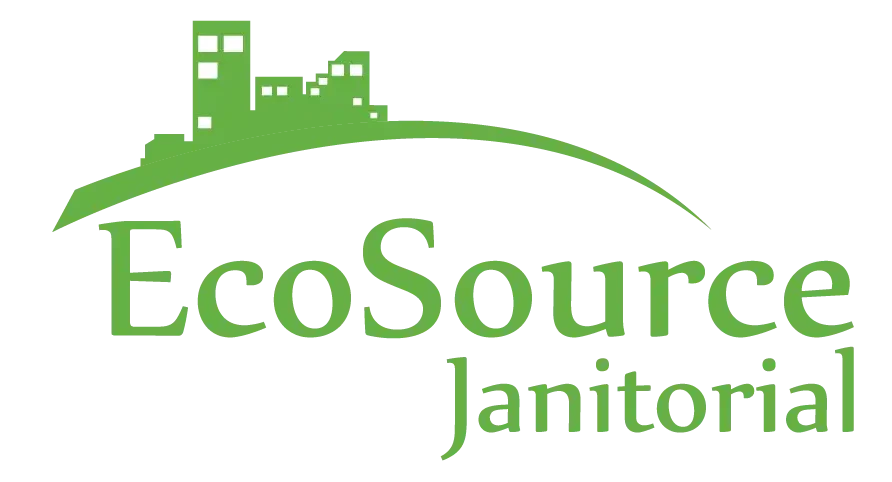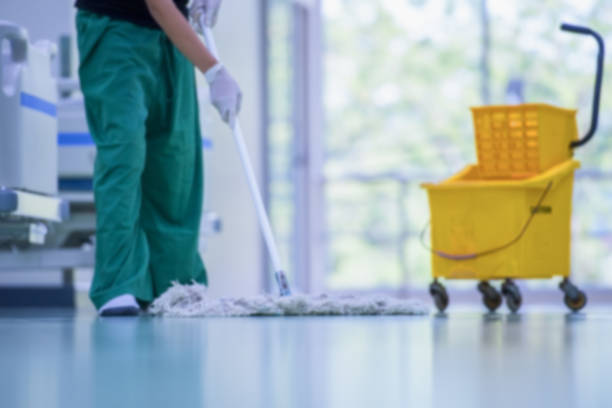Medical offices serve vulnerable people. Patients visit when they feel unwell. Some have weakened immune systems. Others carry infectious diseases. Therefore, cleanliness matters tremendously. A clean medical space protects everyone. It keeps patients safe during visits. It also protects healthcare workers daily. Professional cleaning makes this possible.
General office cleaning differs greatly. Medical facilities need special protocols. They require specific disinfectants and methods. This ensures complete germ elimination. Proper cleaning prevents disease transmission. It also maintains regulatory compliance. Let’s examine why professional medical office cleaning services matter.
Understanding Medical Facility Risks
Healthcare settings host dangerous pathogens. Bacteria and viruses live on surfaces. They can survive for hours or days. Sick patients touch chairs and counters. They cough in waiting rooms. Germs spread easily this way.
Some patients have compromised immunity. Cancer treatments weaken the immune system. Elderly people get sick more easily. Children carry various illnesses. All need protection from germs. Medical staff face constant exposure. They contact sick patients repeatedly.
Clean surfaces reduce their infection risk. This keeps healthcare workers healthy. Regulatory standards exist for cleaning. OSHA sets workplace safety rules. CDC provides disinfection guidelines. Facilities must follow these protocols exactly.
Essential Cleaning Protocols
Medical cleaning follows strict procedures. It begins with proper training. Cleaning staff learn infection control. They understand cross-contamination risks. This knowledge guides their work. Color-coded equipment prevents germ spread.
Red cloths clean restrooms only. Blue cloths are wiped waiting areas. Green cloths clean examination rooms. This system contains contamination. High-touch surfaces need frequent disinfection.
Doorknobs gather germs constantly. Light switches get touched repeatedly. Chair arms hold bacteria from hands. Waiting areas require constant attention. Magazines carry germs between patients. Toys spread viruses among children. Reception counters need regular wiping.
Specialized Equipment and Products
Medical office cleaning services use specific tools. Microfiber cloths trap more germs. They remove particles effectively. Traditional cloths just spread dirt. Hospital-grade disinfectants kill pathogens. They eliminate dangerous bacteria. These products meet EPA standards. They destroy tuberculosis and HIV.
Equipment must handle medical waste. Sharps containers hold dangerous items. Biohazard bags contain contaminated materials. Special protocols govern disposal. Advanced tools improve cleaning quality. UV light devices kill germs. Electrostatic sprayers cover surfaces completely. HEPA filters clean the air.
Examination Room Standards
Exam rooms need thorough cleaning. They host sick patients directly. Surfaces contact bodily fluids sometimes. Therefore, disinfection must be perfect.
Medical equipment requires careful cleaning. Blood pressure cuffs carry germs. Thermometers touch patients directly. Stethoscopes need regular disinfection.
Exam tables present special challenges. They contact patients intimately. Paper covers provide some protection. However, proper cleaning remains essential. Supply areas need organization. Clean supplies must stay separate. Used equipment goes in designated areas. This prevents cross-contamination issues.
Surgical Area Cleaning
Procedure rooms have the highest standards. They must be almost sterile. Even minor procedures risk infection. Therefore, cleaning protocols are strict. Surgical surfaces need special attention. Procedure tables require deep disinfection. Instrument trays must be perfectly clean. Lighting equipment gathers dust. Floor cleaning matters in surgical areas.
Spills must be addressed immediately. Non-porous floors allow proper disinfection. Seamless surfaces prevent germ hiding. Air quality affects surgical outcomes. HVAC systems need regular maintenance. Filters require frequent changing. This reduces airborne pathogens.
Dental Office Specific Needs
Dental office cleaning services face unique challenges. Dental tools create aerosols. These fine mists carry oral bacteria. They settle on all surfaces. Dental chairs have complex mechanisms. They contain many moving parts. Crevices hide blood and saliva. Therefore, disinfection must be thorough.
Water lines present special problems. They can grow dangerous bacteria. Legionella causes serious illness. Regular flushing prevents this risk. X-ray areas need careful cleaning. Equipment has sensitive components. Chemical choices matter greatly. Some cleaners damage expensive machines.
Waiting Room Management
Waiting areas see high traffic. Many people pass through daily. Sick patients sit for extended periods. Surfaces become contaminated quickly. Seating arrangements affect cleaning. Chairs with cushions hold germs. Vinyl surfaces clean more easily. Non-porous materials work best.
Reading materials need rotation. Magazines should be current. Old publications gather dust. Consider digital alternatives instead. Flooring choices impact cleanliness. Carpet holds allergens and germs. Hard surfaces allow proper disinfection. They also show dirt more clearly.
Regulatory Compliance Matters
Healthcare facilities must meet standards. Joint Commission sets requirements. State departments of health inspect. Non-compliance brings serious consequences. Documentation proves cleaning compliance. Logs show task completion. Checklists ensure nothing gets missed. Records demonstrate due diligence.
Staff training must be documented. Cleaning protocols need regular review. Updates reflect new guidelines. Ongoing education maintains standards. Quality control measures are essential. Supervisors verify cleaning quality. Testing checks surface cleanliness. Audits identify improvement areas.
Environmental Services Excellence
Medical cleaning requires specialized staff. They understand healthcare environments. Their training covers infection control. They respect patient privacy always. Work schedules accommodate patient care. Cleaning happens between appointments. Evening crews do deep cleaning. This minimizes disruption.
Emergency response capabilities are crucial. Blood spills require immediate attention. Vomit contains dangerous pathogens. Quick cleaning prevents disease spread. Communication with medical staff matters. Nurses report specific concerns. Doctors identify problem areas. Teamwork ensures patient safety.
Green Cleaning in Healthcare
Sustainable workplace cleaning benefits medical facilities. It protects vulnerable patients. Traditional chemicals cause respiratory issues. Green products are safer alternatives. Eco-friendly cleaning reduces allergies. Patients often have sensitivities. Staff work long hours indoors. Better air quality helps everyone.
Water conservation matters in healthcare. Medical uses consume significant water. Efficient cleaning reduces usage. This supports environmental goals. Waste reduction efforts help too. Concentrated products use less packaging. Reusable cleaning cloths reduce trash. Recycling programs support sustainability.
Cost Considerations
Professional medical office cleaning services seem expensive initially. However, it saves money long-term. Infection outbreaks cost tremendously. Liability risks decrease with proper cleaning. Staff retention improves with safety. Healthcare workers value safe conditions. They stay longer in clean facilities. Recruitment costs decrease accordingly.
Equipment lasts longer with proper care. Medical devices represent major investments. Regular cleaning maintains their function. This avoids premature replacement. Insurance premiums may decrease. Providers recognize risk reduction. Proper cleaning demonstrates due care. This can lower liability costs.
Choosing the Right Service Provider
Selecting a cleaning company requires care. Healthcare experience matters greatly. Ask about medical facility references. Check their training protocols. Review their product selections. Ensure they use hospital-grade disinfectants. Verify their green cleaning options. Confirm equipment suitability.
Discuss communication procedures. Medical offices need responsive service. Problems require immediate attention. Clear channels ensure quick resolution. Evaluate their quality control methods. Ask about inspection processes. Request sample documentation. Understand their performance metrics.
The Patient Experience
Cleanliness affects patient perceptions. People judge healthcare quality visually. Dirty spaces suggest poor medical care. Clean environments build trust immediately. Odor control matters in medical settings. Sick patients often feel nauseated. Strong chemical smells worsen this. Fresh, clean scents are preferable.
Visual cleanliness provides comfort. Patients already feel anxious. Seeing clean spaces reassures them. This improves their overall experience. Privacy considerations are important. Cleaning staff encounter confidential information. They must be trained appropriately. Discretion protects patient rights.
Staff Protection Benefits
Healthcare workers face occupational hazards. Infection risk concerns them daily. Proper cleaning reduces their exposure. This supports staff well-being. Mental health benefits from cleanliness. Working in dirty environments causes stress. Clean spaces improve morale significantly. This reduces staff burnout.
Physical safety improves with cleaning. Clutter-free corridors prevent accidents. Dry floors reduce slipping risks. Organized spaces work more efficiently. Professional pride increases in clean facilities. Staff feel better about their workplace. This improves job satisfaction greatly. Retention rates climb accordingly.
Specialized Medical Cleaning Services
Different facilities have unique needs. Medical office cleaning services vary by specialty. Pediatric offices need child-safe products. Oncology centers require utmost cleanliness. Podiatry offices have specific concerns. Foot care generates particular contaminants. Equipment needs special disinfection. Floors require extra attention.
Veterinary clinics present unique challenges. Animal hairs require frequent vacuuming. Odor control needs are significant. Waiting areas host various species. Mental health facilities need sensitivity. Cleaning must respect patient privacy. Security concerns affect access. Special protocols ensure safety.
Technology in Medical Cleaning
Modern tools improve cleaning effectiveness. UV-C light devices destroy pathogens. They supplement traditional cleaning. This provides extra protection. Electrostatic sprayers cover surfaces completely. They reach difficult areas easily. This ensures thorough disinfection. It also uses chemicals efficiently.
Monitoring technology tracks cleanliness. ATP meters measure surface contamination. This provides objective quality checks. It validates cleaning effectiveness. Software manages cleaning operations. Digital checklists ensure task completion. Scheduling programs optimize workflows. Reporting tools demonstrate compliance.
The Importance of Medical Office Cleaning Services
Proper cleaning prevents infection transmission. It protects vulnerable patients. It also keeps healthcare workers safe. This supports quality patient care. Regulatory compliance requires proper cleaning. Facilities must meet strict standards. Professional services ensure this compliance. They maintain necessary documentation.
Patient satisfaction increases with cleanliness. People feel more confident in clean facilities. This improves healthcare experiences. It also supports practice growth. Staff morale improves in clean environments. Healthcare workers face enough stress. Clean workplaces reduce their burden. This helps retain valuable staff.
Conclusion: Prioritize Medical Facility Cleanliness
Medical offices have special cleaning needs. Standard office cleaning falls short. Professional services understand these requirements. They provide proper disinfection protocols. Patient safety depends on cleanliness. Healthcare workers need protection, too. Regulatory compliance is mandatory. Professional cleaning addresses all these needs.
Protect your patients and staff with professional medical office cleaning. Contact Ecosource Janitorial today for specialized healthcare cleaning solutions!
Frequently Asked Questions
Q1: Why do medical offices need special cleaning?
Medical offices host sick and vulnerable people. They require stronger disinfection than regular offices. Special protocols prevent disease transmission effectively.
Q2: How often should medical offices be cleaned?
Most areas need daily cleaning. High-touch surfaces require disinfection multiple times daily. Procedure rooms need cleaning after each use.
Q3: What makes dental office cleaning different?
Dental office cleaning services handle unique challenges like aerosols and bloodborne pathogens. They require special equipment and disinfectants.
Q4: Are green cleaning products effective in medical settings?
Yes, modern sustainable workplace cleaning products meet healthcare standards. They provide proper disinfection while being environmentally responsible.
Q5: Do cleaning staff need special training for medical offices?
Absolutely. Medical cleaning staff require infection control training. They must understand healthcare protocols and safety procedures completely.

